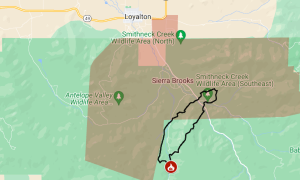Preparing for an emergency is crucial, particularly in regions prone to natural disasters or other unexpected emergencies. Having a plan can significantly reduce stress and ensure the safety of everyone involved. Despite widespread awareness, many individuals struggle to take the necessary steps to prepare. As someone who manages a busy household, including four pets — two dogs and two cats — and three kids, I understand the challenges of making time for preparedness. In my role at the County of Marin’s Office of Emergency Management, I’ve seen many people who recognize the importance of a go-bag but struggle to put one together.
Here are three common obstacles to disaster preparedness and some tips to help overcome them:
1. Time constraints
Time is a critical resource, often cited as the main barrier to preparedness. However, preparing for emergencies does not need to be an overwhelming task. Breaking down the process into smaller, manageable steps can make a significant difference. Dedicating just 10 minutes a day to gathering go-bag items — starting one day with important documents, adding medicine the next and tossing in that emergency stash of dog treats your pup will insist on — can lead to a well-prepared kit without disrupting daily routines.
For pet owners, it’s important to include essential items such as a leash, collar with an ID tag and a recent photo of your pet in case you become separated. Don’t forget to rotate food and water supplies every few months to ensure freshness. These small steps can help you steadily build a comprehensive emergency kit without feeling overwhelmed.
2. Cost concerns
Cost is another common concern. Many people assume that building a go-bag requires a substantial financial investment, yet most essential items are already available in the home. Items such as a change of clothes, extra glasses and a spare phone charger can be repurposed for emergency use. For pet owners, including their favorite toys, leashes and feeding bowls, and a ziplock of their favorite kibble can ensure their needs are met during an evacuation.
Basic emergency supplies like first-aid kits and flashlights are often available at discount retailers, making it possible to build a go-bag gradually and affordably. Additionally, consider creating a pet emergency fund to cover potential costs like boarding or veterinary care if you are displaced. Building this fund over time, even with small contributions, can alleviate financial stress during an emergency.
3. “It will never happen to me” mentality
The belief that “it will never happen to me” is a dangerous misconception. Recent fires in Marin County, which led to evacuations, have underscored the importance of being prepared. Emergencies are unpredictable, and proactive planning is essential to safeguarding personal well-being — because let’s face it, the last thing you want is to be caught off-guard without Fido’s favorite chew toy.
Related Articles
Is a Los Gatos cat’s lack of purring a sign of its upbringing or something else?
Gray wolf population growing fast in California — up sixfold in the past five years
Would Bay Area residents consider cloning their pets?
Can dogs ‘talk’ to humans? A UC study offers an intriguing clue
Mountain lion spotted walking on Main Street in downtown Vacaville
A critical part of this mindset shift involves educating yourself and your family about the specific risks in your area and the appropriate responses. Attend local emergency preparedness workshops, and involve your pets in your family’s evacuation exercises. This practice helps reduce the “it won’t happen to me” mentality.
Addressing these obstacles through practical strategies makes emergency preparedness more manageable and less overwhelming. Small, consistent efforts can significantly reduce the stress of facing an emergency, ensuring that individuals, families and even the most finicky pets are ready when it matters most. Remember, preparedness is a shared responsibility, and by involving your entire household — including your pets — you create a more resilient and prepared community.
For more information and resources, visit ReadyMarin.org.
Elaine Wilkinson is the countywide preparedness coordinator for the Marin Office of Emergency Management. Marin Humane contributes Tails of Marin and welcomes comments and questions. Visit marinhumane.org, find us on social media @marinhumane, or email lbloch@marinhumane.org.












